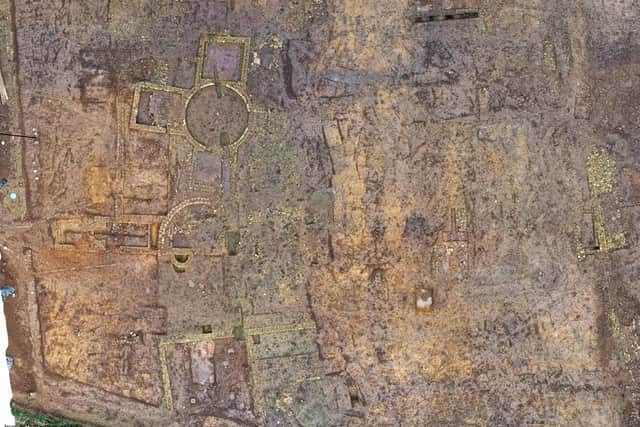Remains of 'high-status' Roman villa and bath-house never seen before in Britain discovered beneath building site in Scarborough
and live on Freeview channel 276
An excavation was carried out at the Keepmoat Homes site in Eastfield after Historic England suggested there was the potential for Roman or Iron Age remains to be found there - but the extent and significance of the discovery has astonished those working on the dig.
A large complex of buildings was revealed, including a circular central room with a number of other rooms and a bath-house leading from it. Experts believe they are the foundations of a 'high-status' Roman villa, some sort of religious community or perhaps a combination of both.
Advertisement
Hide AdAdvertisement
Hide AdThis type of villa layout has never previously been found in Britain and it could even be the first example to be uncovered in the whole of the old Roman Empire.


Developers Keepmoat have now amended their plans for the site to preserve the remains, and houses will no longer be built over them. The area will instead be designated as public open space.
Historic England also intend to apply for Scheduled Ancient Monument status for the site, and will fund further archaeological work and analysis.
Inspector of ancient monuments Keith Emerick said: “These archaeological remains are a fantastic find and are far more than we ever dreamed of discovering at this site. They are already giving us a better knowledge and understanding of Roman Britain. We are grateful to Keepmoat Homes for their sensitive and professional approach to helping ensure the future conservation of this important historical site.”
Advertisement
Hide AdAdvertisement
Hide AdCorporate director for business and environmental services at North Yorkshire County Council Karl Battersby, who also advised the developers, added: “This is a remarkable discovery which adds to the story of Roman settlement in North Yorkshire.


"Work by local archaeologists has already established the buildings were designed by the highest quality architects available in northern Europe during the era and constructed by the finest craftsmen.
“Because of the significance of this, it is excellent to see that the layout of the new housing has been redesigned so this important part of our history can be preserved. There will be further work on the finds and environmental samples to try to establish exactly what this enigmatic site was and why it was created so far from other Roman centres.”
Although there is evidence of a Roman signal station on the headland near Scarborough it had been previously thought that there had not been a formal settlement in the area during their period of occupation.